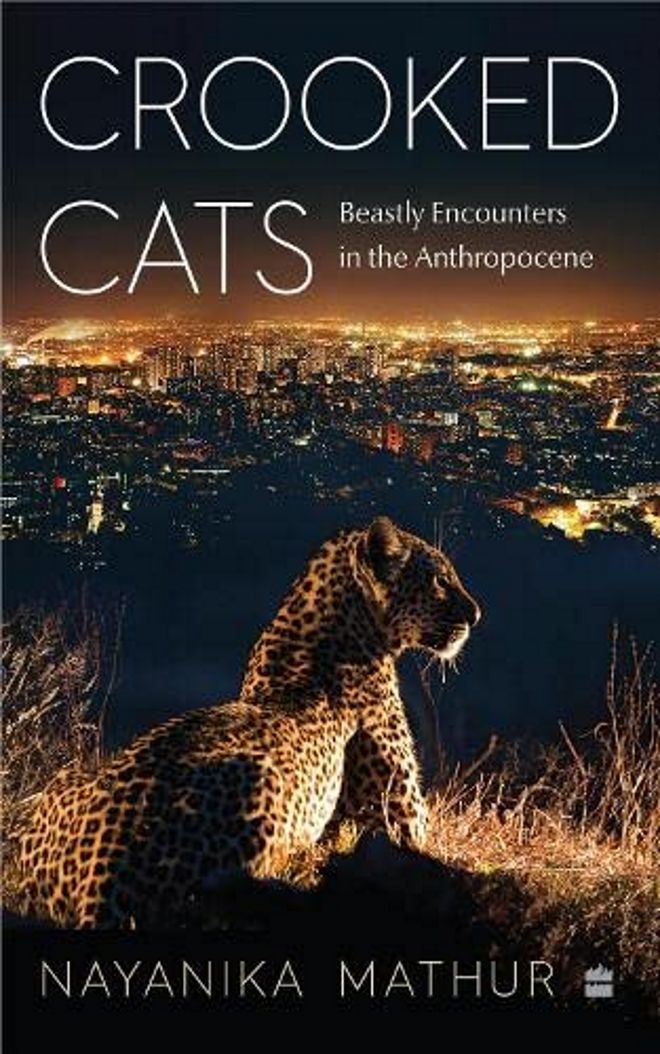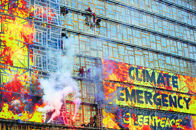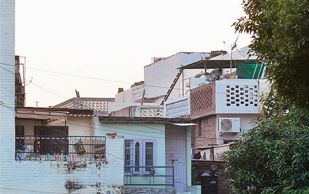
Crooked cats: Beastly encounters in the anthropocene by Nayanika Mathur. HarperCollins. Pages 224. Rs 499
Lt Gen Baljit Singh (Retd)
Nayanika Mathur has picked on ‘crooked cats’ (strayed/aberrant leopards) as the most ingenious metaphor to post the much-needed alarm call that the climate change cataclysm has arrived, knocking at our doorsteps. The web of life stitched by the forces of evolution has been more stressed in the last 200 years than perhaps by all the past millenia put together. And the immediacy of the concerns voiced by Mathur gets unequivocally validated as we haplessly watch prime forests of America, western Europe and Australia rendered to ash by the climate change trigger, as also the uninterrupted erosion of polar ice shelves over the last three decades and nearer home, the ever diminishing volume of our perennial rivers.
It goes to the credit of the founding fathers of the nascent Republic of India that as early as 1948, they took substantive steps to arouse awareness about India’s natural and man-made environment in equal measure as the building blocks of policy formulation for sustainable development, Article 51A (g) being specific to peaceful cohabitation: “It shall be the duty of every citizen of India to protect and improve the natural environment, including forests, lakes, rivers and wildlife, and to have compassion for living creatures.”
Living under such ethical, constitutional canon, there ought not to have been any scope for man-animal conflict but as ‘Crooked Cats’ showcases, there is many a slip between the cup and the lip.
In the 200-page book, there is frequent throwback to Jim Corbett’s role to rid the populace of the Chamoli-Garhwal region from the constant overhang of the shadow of death at the hands of crooked cats — the man-eaters, and yet, in the next breath, she berates Corbett for playing to the gallery with a focus on clever storytelling for self-aggrandisement. Be that as it may, Corbett was of the firm opinion that the ‘crookeds’ were, in fact, driven by age-related infirmities than any ‘aadamkhor’ tendencies, per se.
However, Mathur’s ‘crooked cats’ are neither rapacious nor climate change driven ‘tedha’, but if truth be told, they are the latest among the world’s burgeoning refugees because their living spaces have been usurped by man. Period.
Nevertheless, every other concern of climate change flagged by the author is profoundly palpable despite a valiant attempt made by the entire comity of nations as a collective at the Rio Earth Summit back in June 1992. Almost each delegation was led by the head of state and the declaration to slow down and ultimately reverse climate change was signed by President Clinton as the chairman of the Summit and, a few years later, further ratified by the Paris Declaration, this time headed by President Obama. At the heart of these declarations was the pledge to eliminate fossil fuels from all walks of life, but, easier said than done.
The Indian delegation at the Rio Summit was led by Kamal Nath, the then Minister of Environment & Forests, who had made a profound statement: “...unless environmental awareness becomes a conscious habit with the people of India, no amount of governmental intervention can prevent India’s ecological collapse…” We can have no quarrel with the statement except that it is a half-truth. The trouble lies with the unspoken truth, that the exclusive polluters of environment are the governments the world over because their engines of governance run solely on fossil fuels, generating greenhouse gasses, leading to global warming.
As to where do we stand years after the ratification of the Paris Accord is best summed up by Mathur thus: “The rationale, basically, is that due to global warming, it has become so hot that even in the upper Himalaya the bears have been ‘driven mad’ (pagal ho gaye hain) by the heat. These heat-crazed bears indulge in random and inexplicable acts of violence, such as the mauling of human beings and the destruction of human property.” That is just the tip of the proverbial iceberg.
As though validating Mathur’s choice of the metaphor from the animal world, last month, The Tribune carried an item and image of three elephants striding through the Army Hospital in Binnaguri, West Bengal: “…didn’t cause any harm... unusual to see them in hospital”, etc.
Join Whatsapp Channel of The Tribune for latest updates.



























